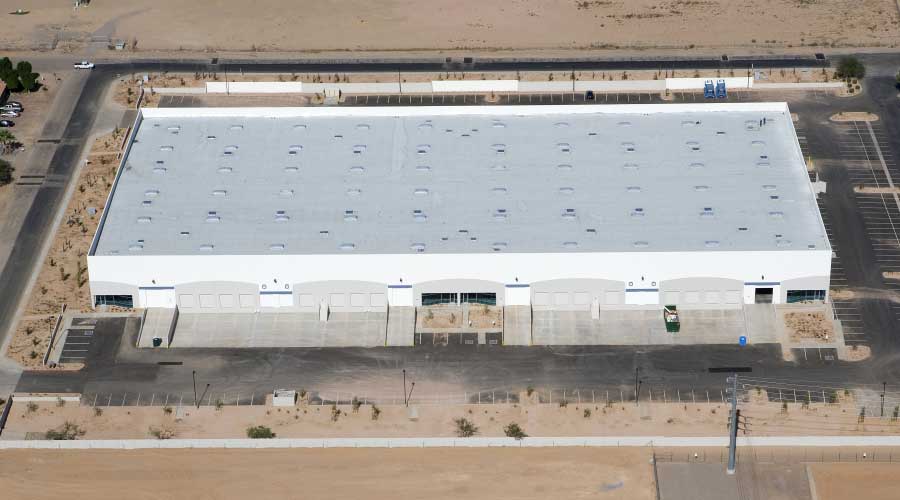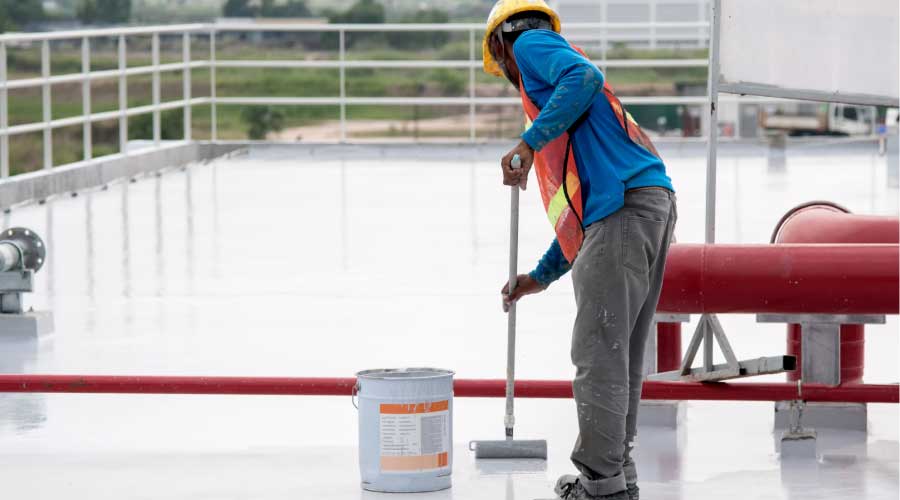Modified Bitumen and BUR Systems: Roof Coating Strategies
Polymer-modified bitumen roofing is a subset of asphalt roofing. Before these roofing sheets are formed, asphalt is heavily modified with atactic polypropylene (APP) or SBS rubber. These two technologies provide products with significantly different properties.
Technicians can install SBS materials with mopped hot asphalt, cold adhesive or torches. They can be hybrid systems and typically feature a mineral-surfaced cap sheet. In most parts of the United States, APP-modified-bitumen systems are torch-applied, rather than adhered with hot asphalt or adhesives. APP most commonly is available as a smooth-surface material, though granule surfaces are available.
Recently, manufacturers introduced white polymer-modified-bitumen cap sheets designed for use in capping traditional built-up roofing (BUR) systems. If the cap sheets provide reflectance values above 0.7, the roof systems qualify for an exemption from California’s Title 24.
Applicators also can apply various protective and reflective coatings to polymer-modified bitumen substrates in the field.
These systems generally are compatible with coatings developed for conventional BUR systems; aluminum and white coatings commonly are used. Elastomeric acrylic coatings can smooth polymer-modified bitumen and mineral-surfaced cap sheets to turn their black surfaces white and extend roof-system life cycles while lowering energy costs.
Among the new products available are elastomeric acrylic coatings featuring non-bleed formulas, which provide asphaltic substrates with a cool, bright white, protective seal. These specially formulated coatings maintain their bright white surfaces for long-term performance.
Roof systems with asphaltic substrates must age at least 90 days before the application of white elastomeric acrylic coatings. If a substrate has an unknown coating, applicators should perform an adhesion test. After a successful adhesion test, they should remove loose coatings and debris and power-wash the surface. Excessively soiled or greasy surfaces might require more cleaning with a stiff-bristle broom or scrub brush and suitable detergent.
BUR Systems
Coatings commonly used on asphalt BUR systems include solvent- and water-borne asphalt coatings; solvent- and water-borne aluminized asphalt coatings; and water-borne white elastomeric coatings.
BUR systems can have bare or glaze-coated top sheets, they can be flood-coated with mopping asphalt, they can have a mineral cap sheet as a top layer, or they can have a finish layer of gravel embedded in hot asphalt.
A mineral cap sheet generally is the easiest surface to coat because its texture allows most coatings to achieve a strong mechanical grip. These minerals also block asphalt bleed.
Smooth BUR systems are coated easily with solvent-borne asphalt coatings. They require careful preparation and base coats to accept water-borne coatings. Gravel-covered roofs generally are impractical to coat without removing the gravel, which might affect a roof system’s fire rating, depending on the specified coating system.
Applicators can use aluminum pigments to formulate solvent- and water-borne asphalt coatings to protect against UV radiation and provide significant reflectivity. These coatings contain small flakes of aluminum pigment. They typically have solar reflectivity values of 0.4-0.5, though premium formulations offer initial solar reflectivities greater than 70 percent.
Improving the reflectivity of the existing base of a commercial BUR system is important. Although BUR systems are among the most durable roof systems available, it is possible to extend their life cycles even further with coatings. •
Reed Hitchcock is executive director with the Roof Coatings Manufacturers Association, www.roofcoatings.org
Spotlight: RCMA
The Roof Coatings Manufacturers Association (RCMA) is the national trade association representing manufacturers of cold-applied coatings and cements used for roofing and waterproofing, as well as the suppliers of products, equipment, and services to and for the industry.
RCMA is dedicated to advancing product technology and ensuring an ongoing supply of quality, energy-efficient materials to meet the needs of contractors, consumers, and the environment. It boasts more than 70 member companies.
Earlier this year, the association formed the Roofing Coatings Industry Committee on Sustainability to focus on the environmental benefits of roof coatings. The committee’s initial goals:
• identifying and developing sustainability criteria for coatings
• performing life-cycle-cost analysis and creating tools for evaluating options
• disseminating committee findings for the benefit and education of roofing, specifying, and regulatory professionals.
For more information, visit www.roofcoatings.org.
|
Related Topics:














